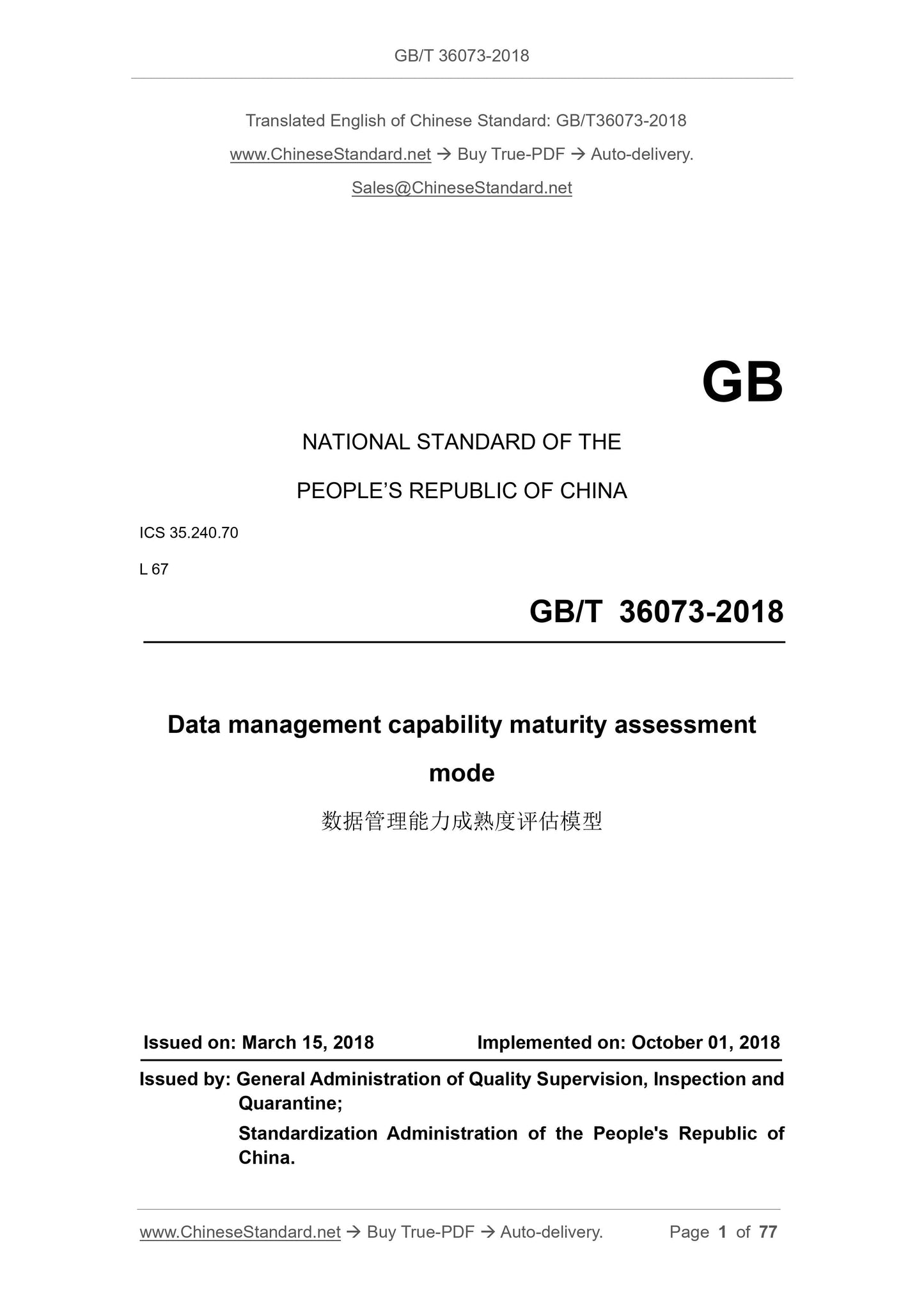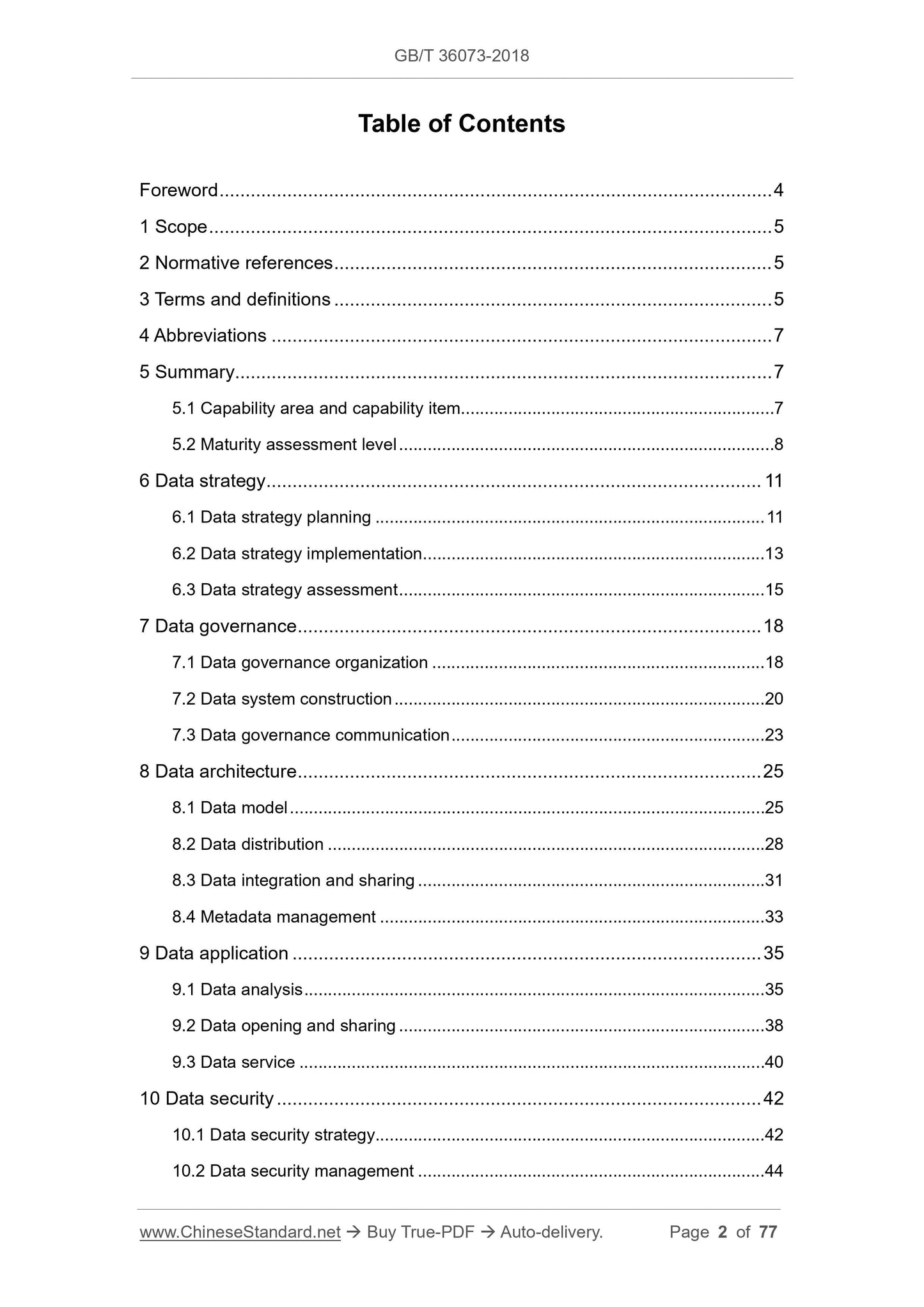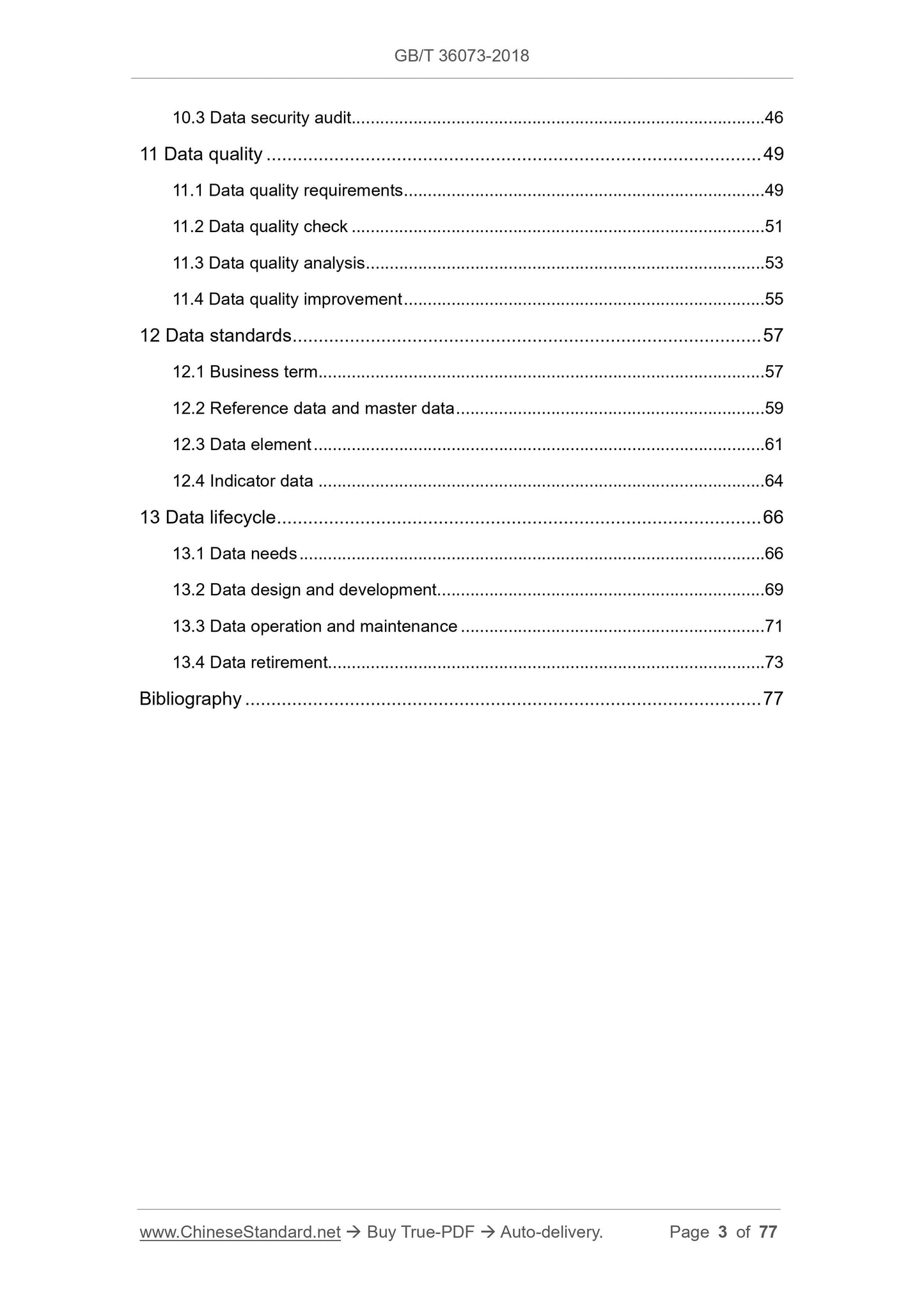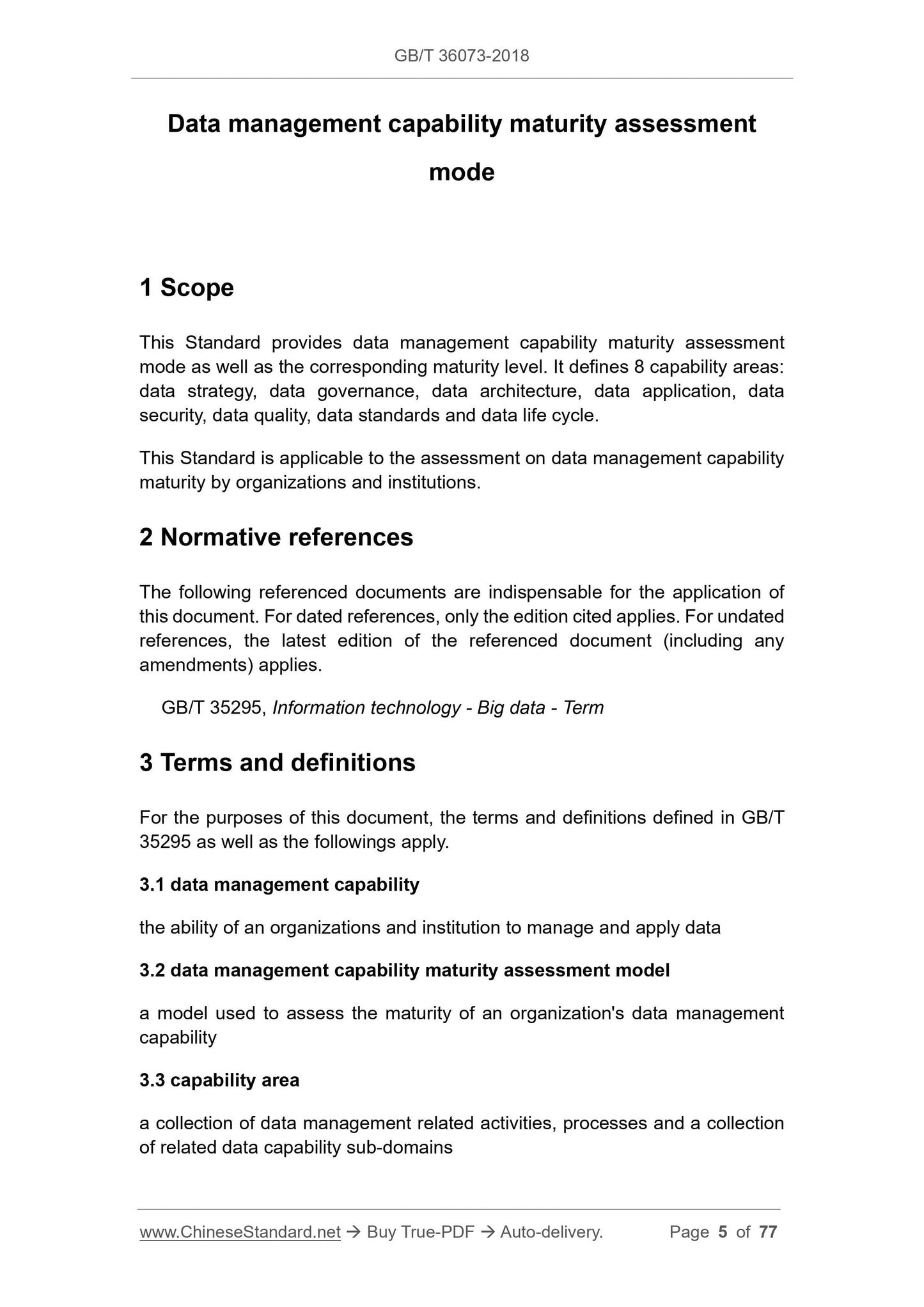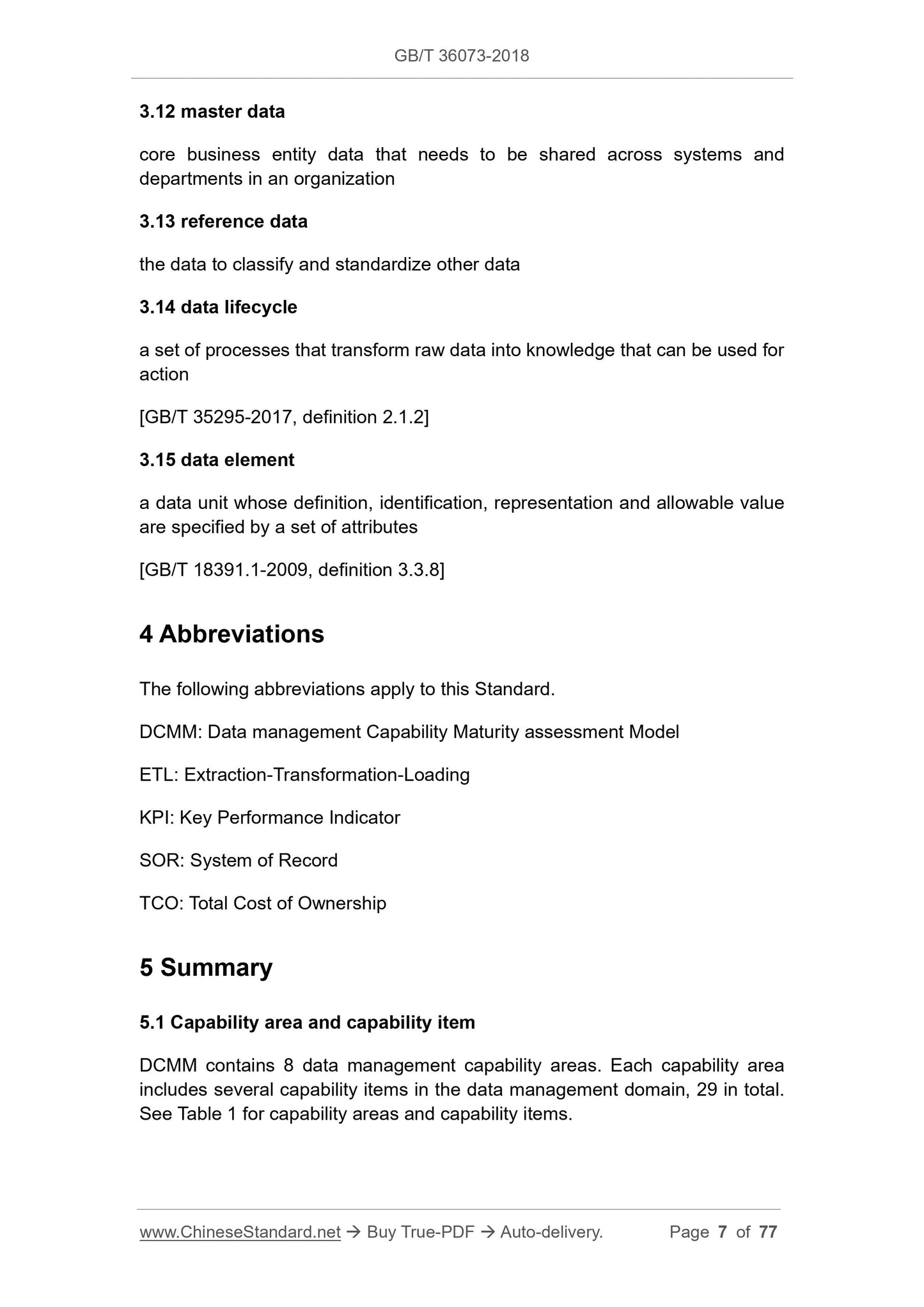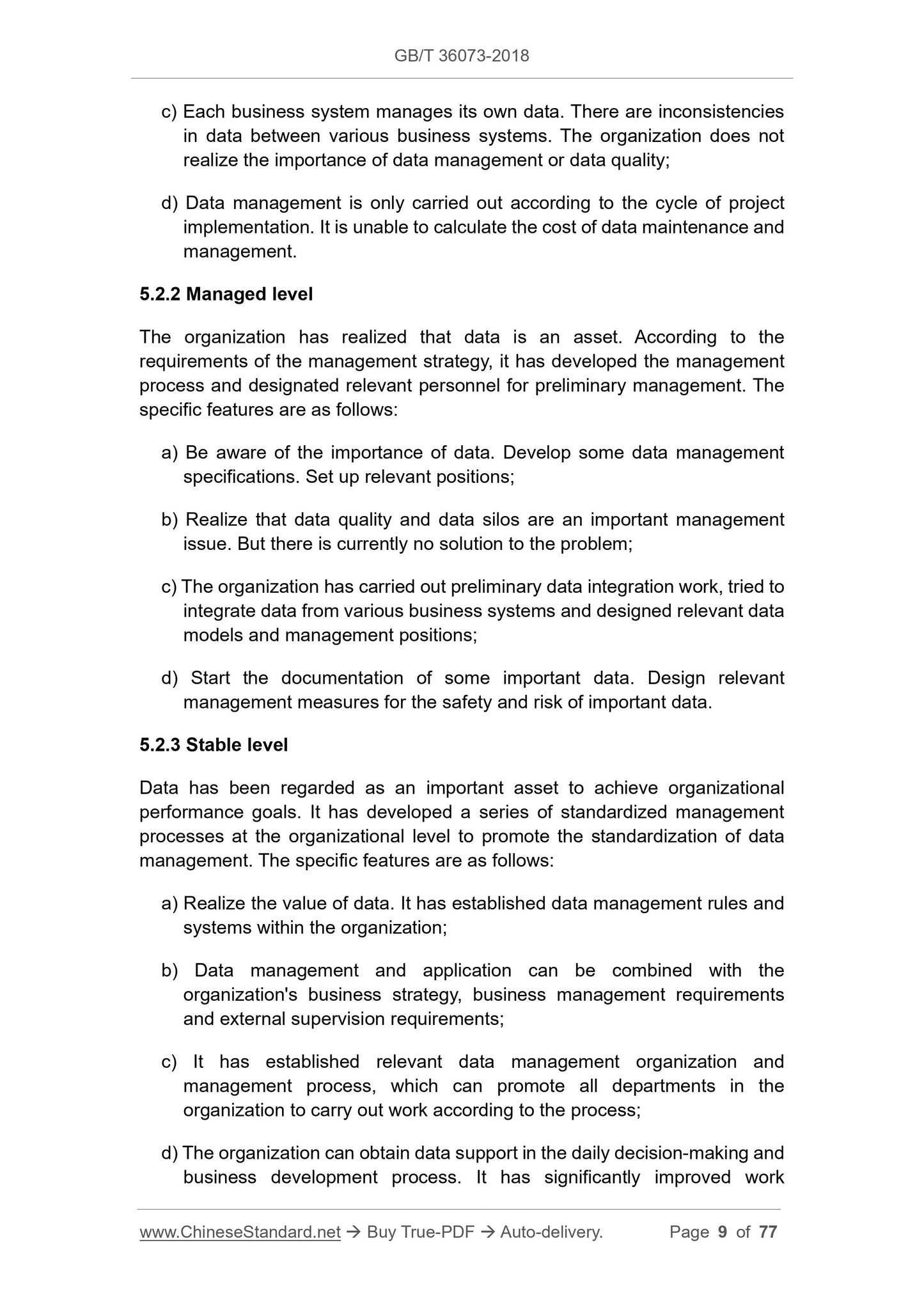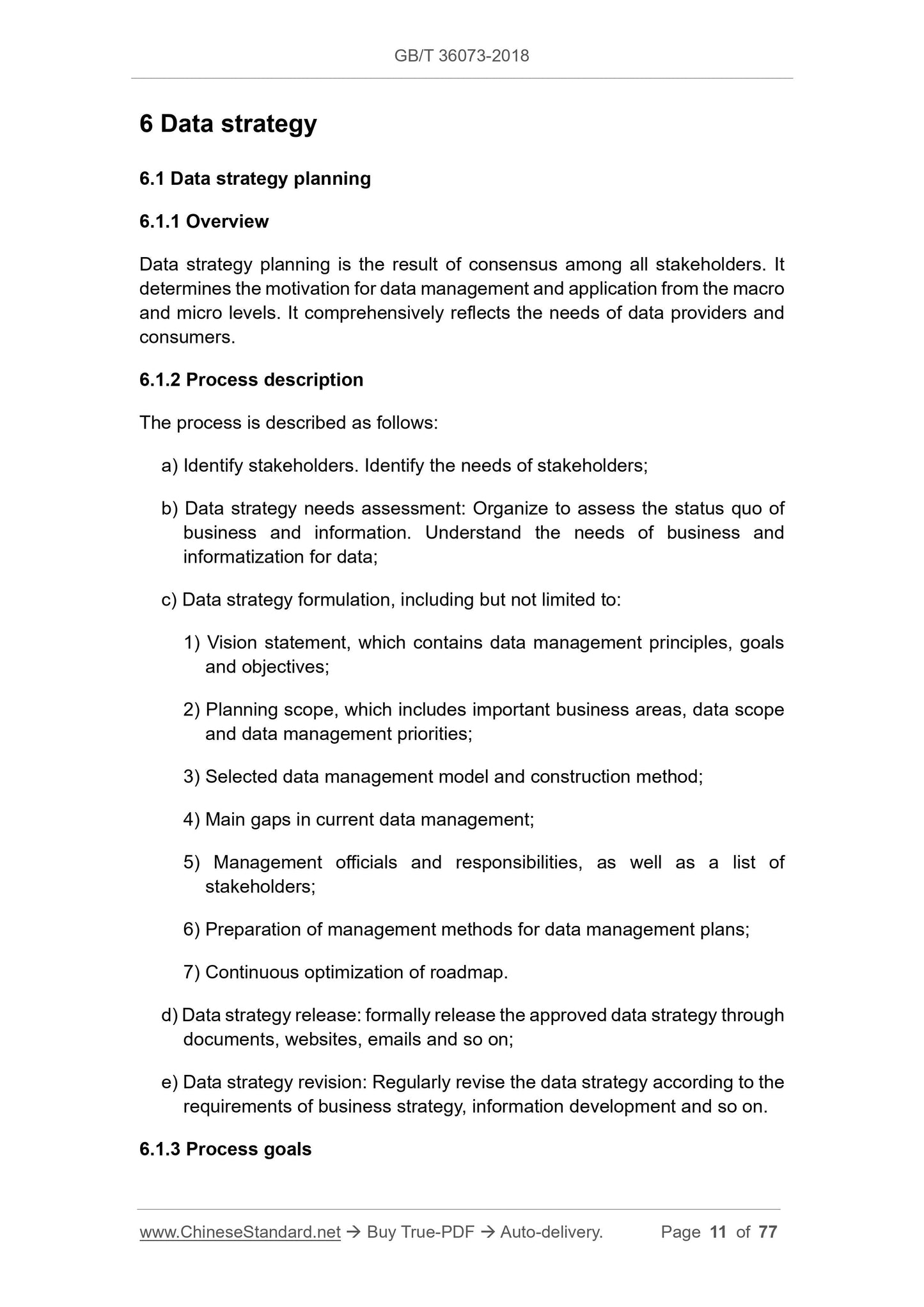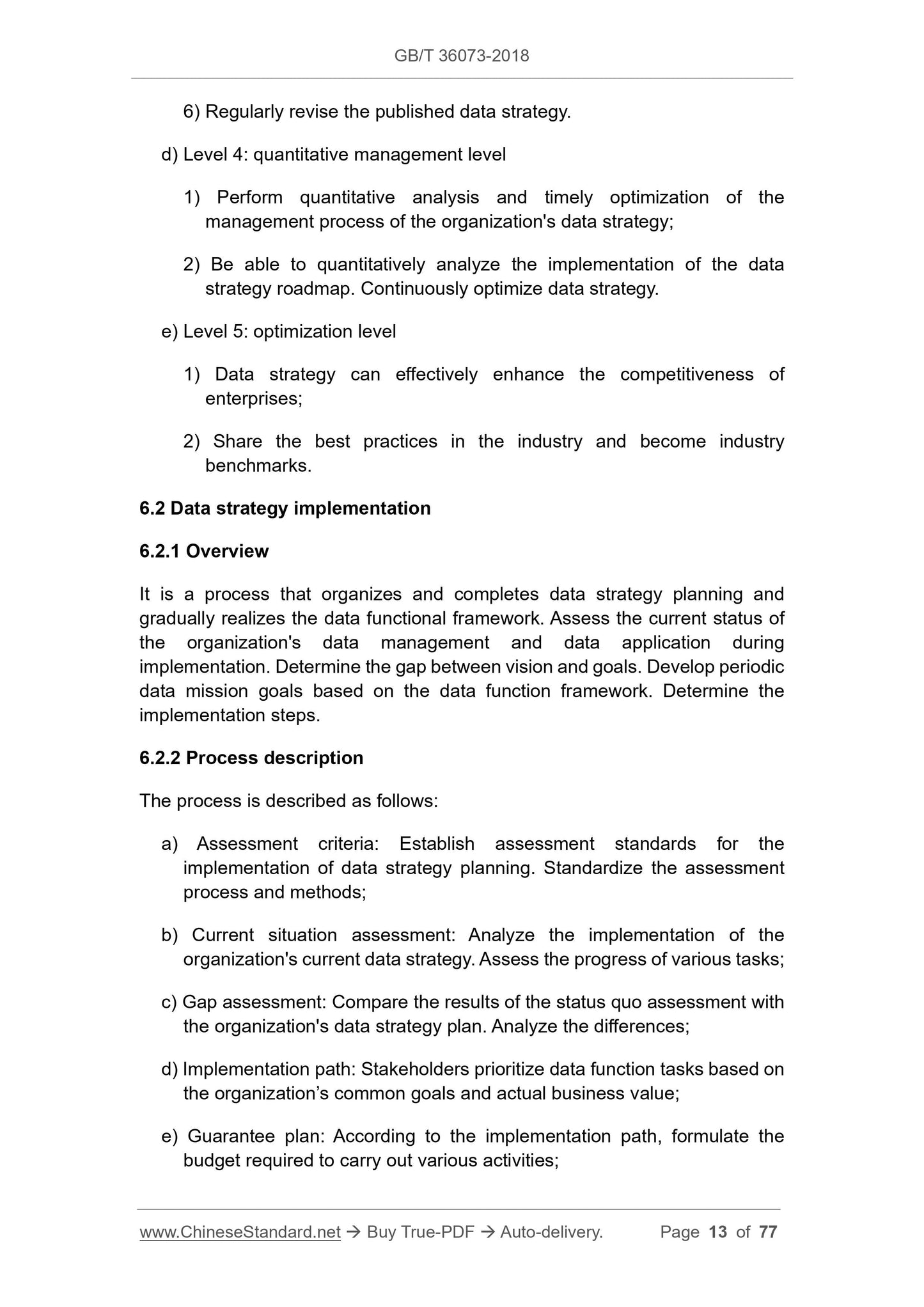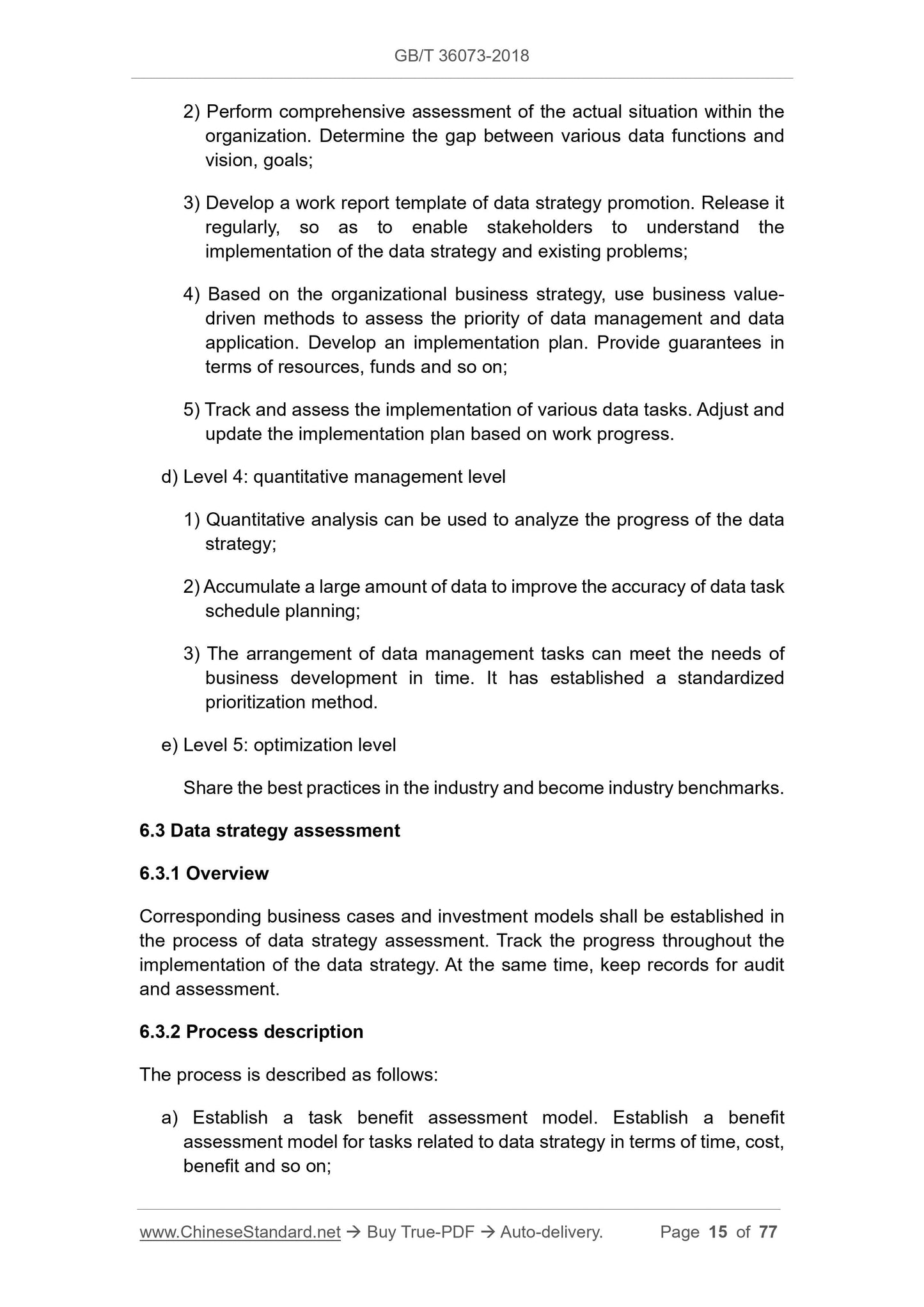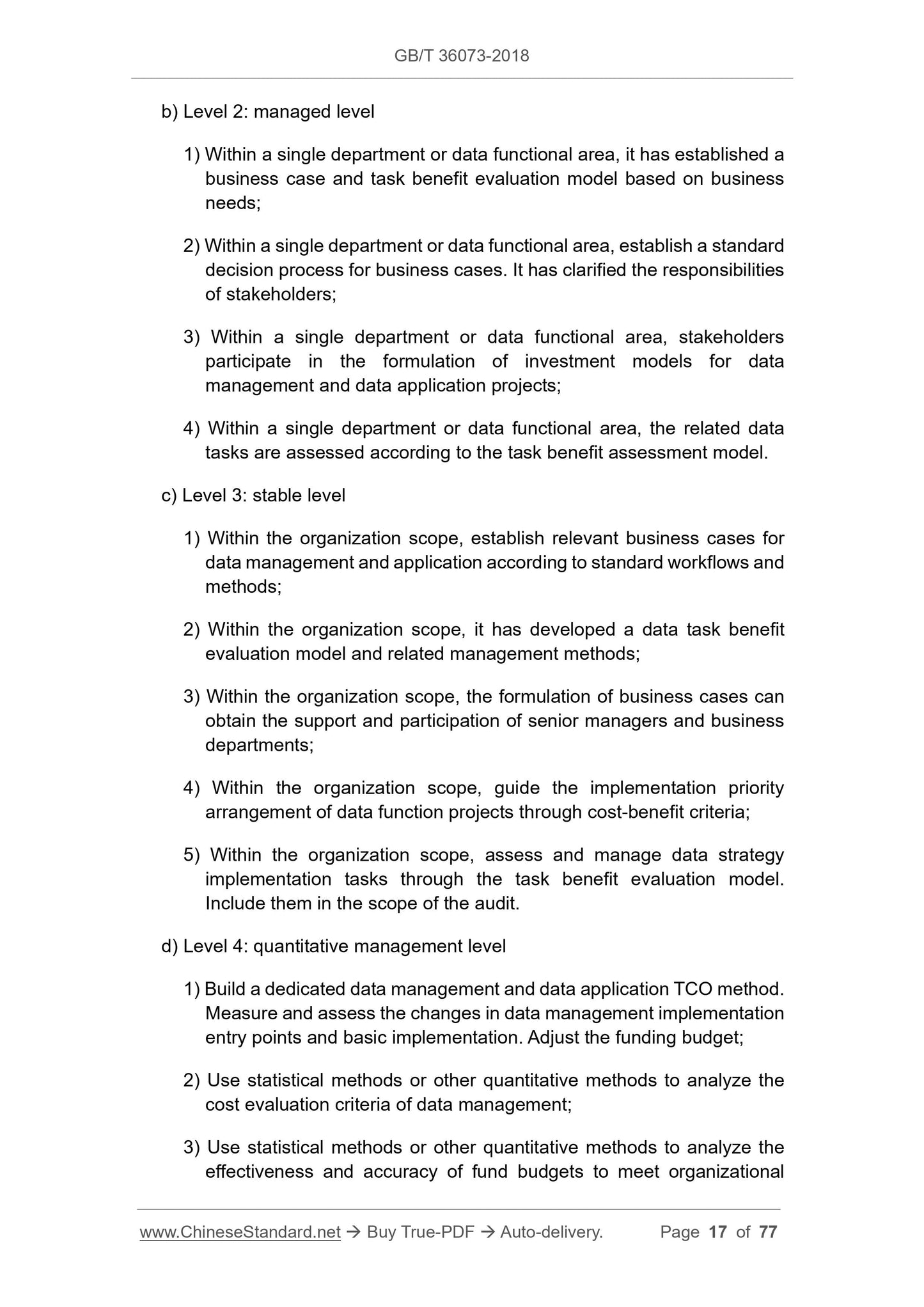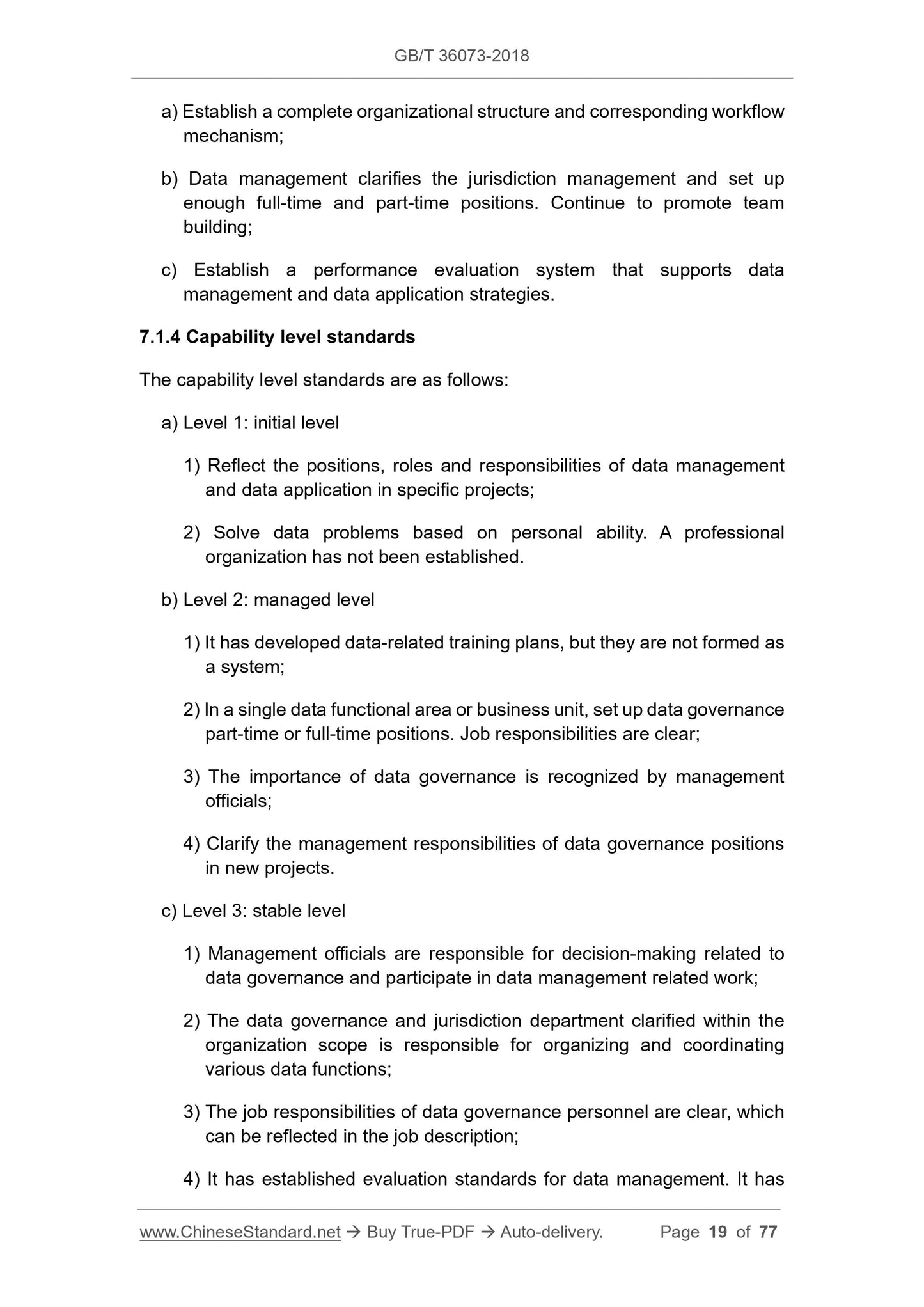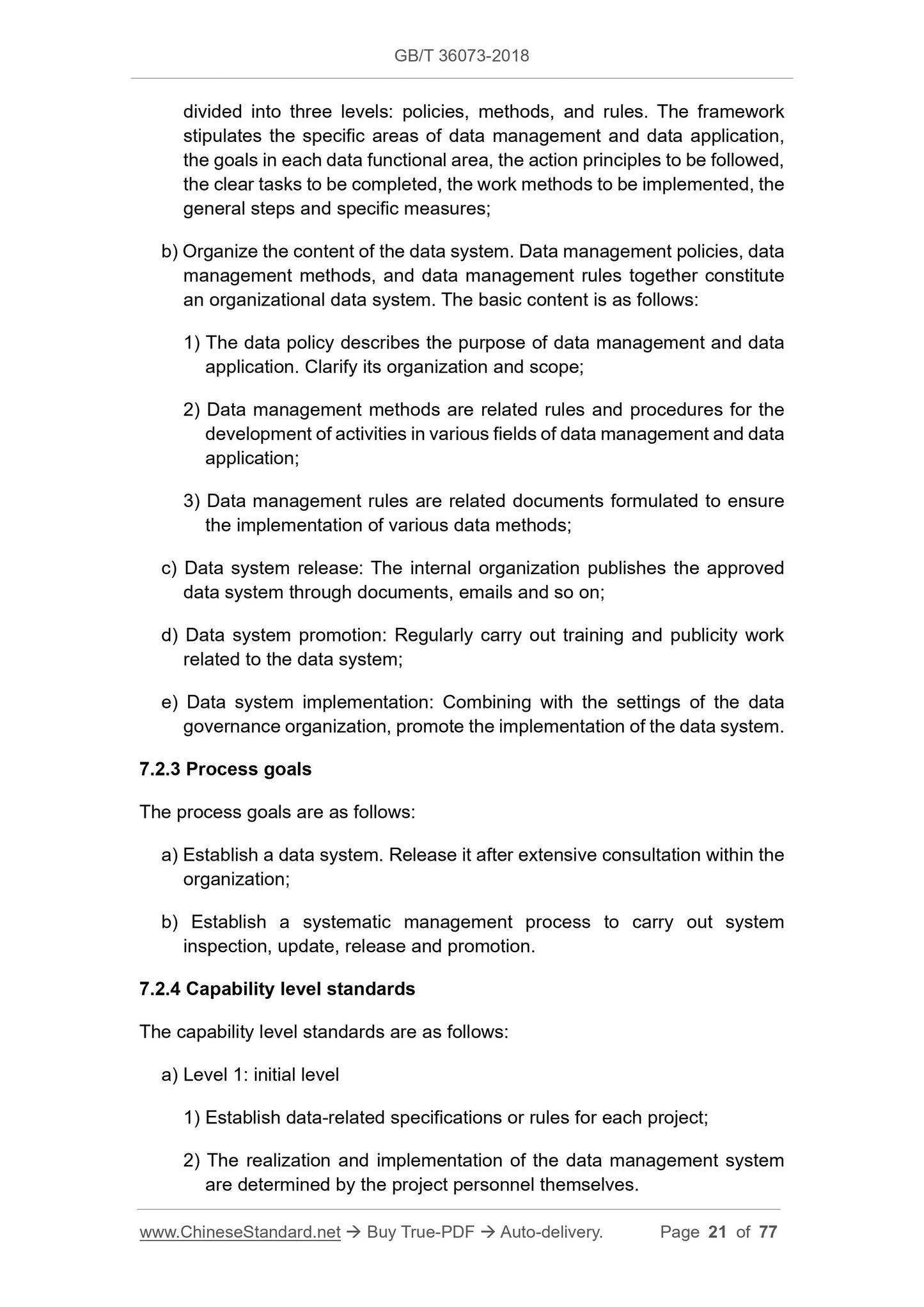1
/
of
12
www.ChineseStandard.us -- Field Test Asia Pte. Ltd.
GB/T 36073-2018 English PDF (GB/T36073-2018)
GB/T 36073-2018 English PDF (GB/T36073-2018)
Regular price
$650.00
Regular price
Sale price
$650.00
Unit price
/
per
Shipping calculated at checkout.
Couldn't load pickup availability
GB/T 36073-2018: Data management capability maturity assessment mode
Delivery: 9 seconds. Download (and Email) true-PDF + Invoice.Get Quotation: Click GB/T 36073-2018 (Self-service in 1-minute)
Newer / historical versions: GB/T 36073-2018
Preview True-PDF
Scope
This Standard provides data management capability maturity assessmentmode as well as the corresponding maturity level. It defines 8 capability areas.
data strategy, data governance, data architecture, data application, data
security, data quality, data standards and data life cycle.
Basic Data
| Standard ID | GB/T 36073-2018 (GB/T36073-2018) |
| Description (Translated English) | Data management capability maturity assessment mode |
| Sector / Industry | National Standard (Recommended) |
| Classification of Chinese Standard | L67 |
| Classification of International Standard | 35.240.70 |
| Word Count Estimation | 46,438 |
| Date of Issue | 2018-03-15 |
| Date of Implementation | 2018-10-01 |
| Issuing agency(ies) | State Administration for Market Regulation, China National Standardization Administration |
Share
